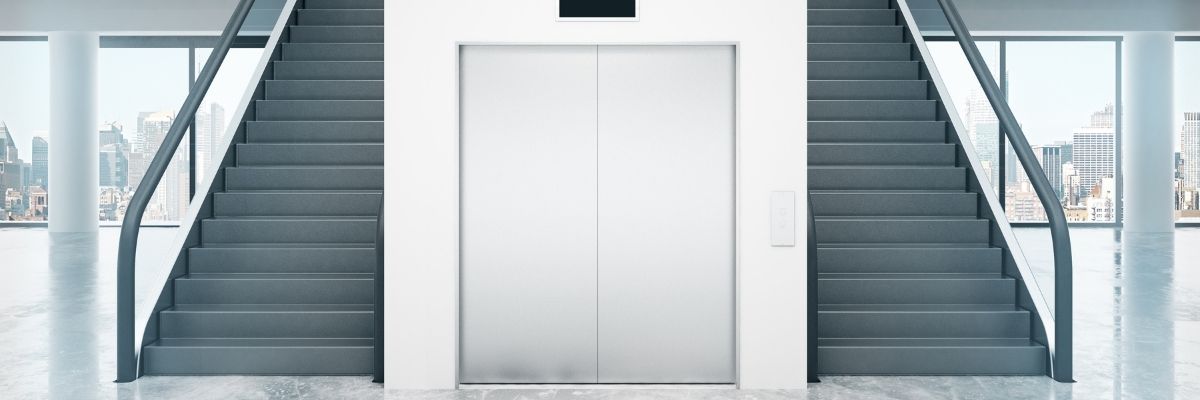
Problems can sometimes arise in Communities of Property Owners when it comes to installing a lift, and we would like to resolve any doubts that you may have on the matter. What happens if a resident refuses to pay for the lift installation?
Índice de contenidos
Quorum to install a lift in a Community of Property Owners
First of all, it is useful to know the cases in which a lift can be installed in a Community of Property Owners.
The Spanish Horizontal Property Law (LPH) establishes, in the first paragraph of article 17.2 (in its version dated 27 June 2013), the quorum required to install a lift (verbatim):
“Without prejudice to the provisions set forth in article 10.1 b), the carrying out of works or the establishment of new common services aimed at removing architectural barriers that hinder access or mobility for disabled persons and, in any case, the establishment of lift services, even when they imply the modification of the constitutive title, or of the by-laws, shall require the favourable vote of the majority of the property owners, who, in turn, represent the majority of the participation quotas”.
The Property Owners must agree to the installation of the lift in their Property Owners’ Meeting with a simple majority at the second meeting call. If installation is not approved by a simple majority, it will not be able to proceed to the second phase (the property owners in attendance would be against the installation).
If it is approved in the first phase, it will pass to the second phase. Notification must be given by reliable means (sending a letter or copy of minutes) to the property owners, at which point the owners who were absent from the meeting will have 30 days to vote for or against the resolution. Afterwards, if the final count is in favour, the work of changing or installing the lift can begin.
Do the property owners who opposed the installation of the lift have to pay for it?
Once the installation of the lift has been approved with the necessary quorum according to the LPH, all members of the Community of Property Owners, including those who opposed the installation, will need to pay the corresponding costs. Even if the expense that corresponds to each property owner exceeds 12 ordinary monthly payments of common expenses.
As is stated in the second paragraph of article 17.2 of the Spanish Horizontal Property Law (LPH): “When agreements are validly adopted to carry out accessibility works, the community of property owners shall be obliged to pay the expenses, even if the amount charged annually exceeds twelve ordinary monthly payments of common expenses”.
If the lift installation is approved, and even if they own a ground floor residential property or a commercial premise, all property owners must contribute the amount specified according to the proportion of their fees. It should be noted that the improvement affects the entire building, which will increase in value with the installation of the lift.
Who pays for the maintenance of the lift?
In theory, lift maintenance costs will be paid between all members of the Community of Property Owners. If a property owner lives on the ground floor and isn’t going to use the lift, it’s logical that he/she won’t want to contribute towards its maintenance costs.
Can he/she be exempt from making contributions?
The LPH does not set forth, at any point, that property owners living on floors where use of the lift is not required are exempt from contributing towards their maintenance costs. However, it will be the Community’s by-laws that can exempt property owners from these payments. If the by-laws don’t state anything on the matter either, the issue can be addressed in a Property Owners’ Meeting, in which it will need to be approved by a simple majority.
It should be taken into account that this exemption would only apply to maintenance costs, and that they would continue to be responsible for extraordinary costs for both the lift and the rest of the building.
A property owner who refuses to pay for the lift
A member of the Community of Property Owners cannot refuse to pay for the installation of an improvement, such as that of a lift, if this decision has been approved in the Meeting of Property Owners.
Any refusal to pay for the lift maintenance must be justified by the Community Statutes or by a majority decision in the Meeting of Property Owners.
If any property owner refuses to make a payment when he/she is not exempt from doing so, they will be added to the list of defaulters, with everything that this implies.
We at Mediterráneo Property Administrator have more than 250 employees ranging from lawyers to economists and engineers, providing tailor-made solutions for each Community of Property Owners. Click on this link for a no-obligation quote.